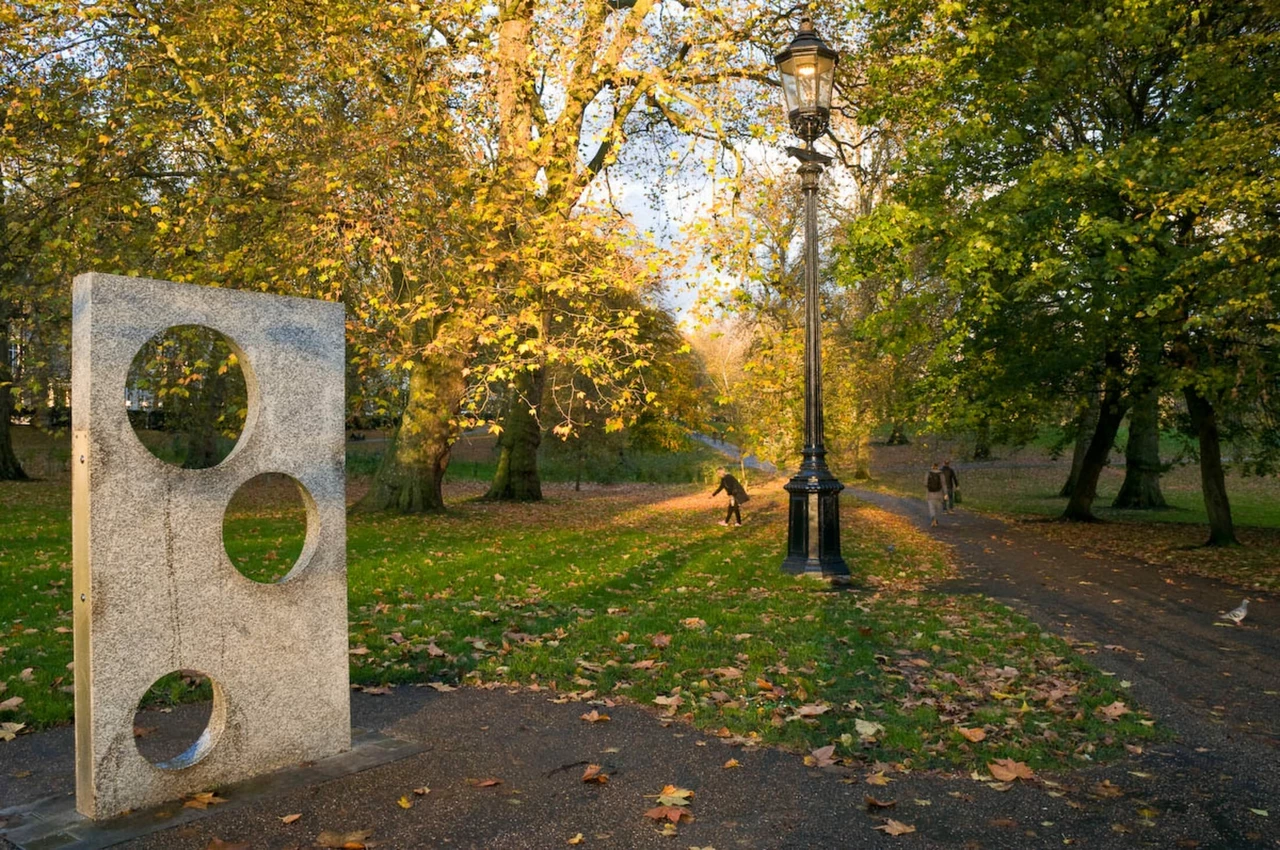
Monuments in The Green Park
Key information
The Green Park is home to monuments of international significance.
Standing at the end of Constitution Hill are the Memorial Gates. They commemorate the five million men and women from the Indian Subcontinent, Africa and the Caribbean who fought alongside Britain in the two World Wars.
On important dates like Remembrance Sunday, the flames at the top of the gates are lit. Next to the gates sits a memorial pavilion, inscribed with the names of 74 brave individuals who were awarded either the George Cross or Victoria Cross.
On the other side of the park is the striking Bomber Command Memorial. This commemorates the 55,573 people who died while serving in the Bomber Command during the Second World war.
To find out more about these important memorials and discover what else you can find in The Green Park, explore the links below.
| Monuments index |
|---|
Bomber Command memorial
The Bomber Command Memorial commemorates the 55,573 who died while serving in Bomber Command during the Second World War.
It is located in The Green Park along Piccadilly. The closest tube station to the memorial is Hyde Park Corner.
The Bomber Command Memorial was designed by architect Liam O'Connor and was built using Portland stone. Within the memorial are the bronze sculptures of a Bomber Command aircrew.
Learn more about Bomber Command and the memorial.

Canada Gate
Canada Gate was installed in the early years of the 20th century as part of the memorial to Queen Victoria. They form a grand entrance into The Green Park.
The gates were a gift from Canada, marking its contribution to the then British Empire. The metalwork includes the crests of Canadian provinces.
From Canada Gate into The Green Park is a wide grass path lined with trees, known as The Broadwalk. It was planted in 1905 to create a good view of the Queen Victoria Memorial from Piccadilly.
The Broadwalk also marks the approximate course of the ancient River Tyburn that now flows under the park on its course from Hampstead to the River Thames.

Canada memorial
The Canada Memorial was unveiled by the late Queen Elizabeth II in 1994 and remembers the one million Canadians who served with British forces during the two World Wars.
The narrow walkway, dividing the memorial in two, faces the direction of the Canadian port of Halifax in Nova Scotia, from where many Canadian service personnel sailed for Europe.
The bronze leaves embedded in the granite are maple, the national symbol of Canada. The designer was the Quebec artist, Pierre Granche.
The Canada Memorial is located only a short walk into the park from Canada Gate and Buckingham Palace.

Memorial Gates
The pillars of the Memorial Gates, inaugurated by the late Queen Elizabeth II in 2002, are dedicated to five million people from the Indian Sub-Continent, Africa and the Caribbean who served or lost their lives in the two World Wars.
The pillars are made from Portland Stone and topped by a bronze urn and gas flames, which are lit on special occasions such as Remembrance Sunday, Armistice Day and Commonwealth Day. The names of holders of Victoria and George Crosses are engraved on the inside of the domed pavilion and the major campaigns are listed on two stone benches
The great stone arch, just outside of the park, is the Wellington Arch. It once stood and marked the northern gate to Buckingham Palace. It moved to its present position in 1882.

Watering Holes drinking fountain
With three watering holes at heights from which adults, children, wheelchair users and dogs can drink cool, fresh water, this fountain is a fabulous addition to The Green Park.
Launched in June 2012, this unique sculptural stone fountain was designed by Robin Monotti Architects and Mark Titman.
Made out of an 800kg slab of Cornish granite – the same used in the Diana Memorial Fountain in Hyde Park and Tower Bridge – it’s located near the Bomber Command Memorial in The Green Park.
It was one of the winners of an international drinking fountain competition. The judges all felt that the Watering Holes design was very 'art-led' and held enormous potential for the parks.
This fountain is part of the Tiffany Across the Water programme, which was made possible following a generous $1.25 million gift from The Tiffany & Co. Foundation to restore and renew the ornamental and drinking fountains across London’s eight Royal Parks.
For the generosity and invaluable support of the installation of Watering Holes, we would like to thank:
- Prime Development
- Clipfine
- Maestro Pressure Coolers
- Stone Interiors
